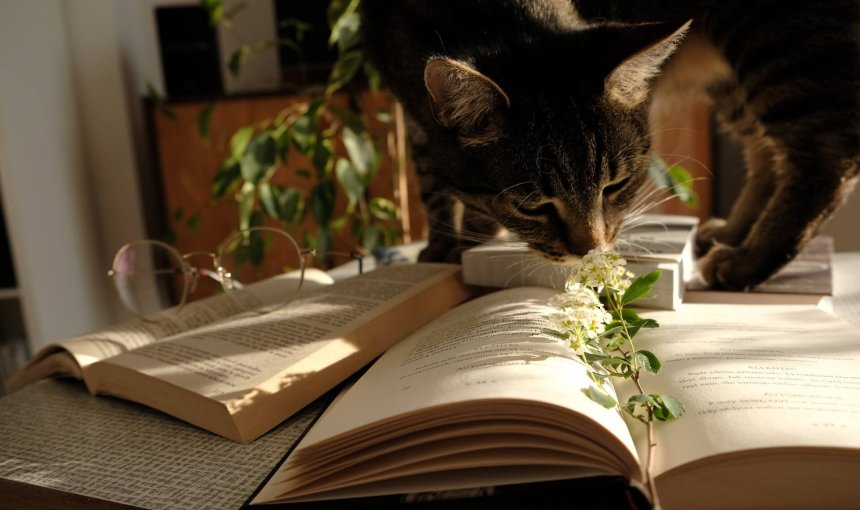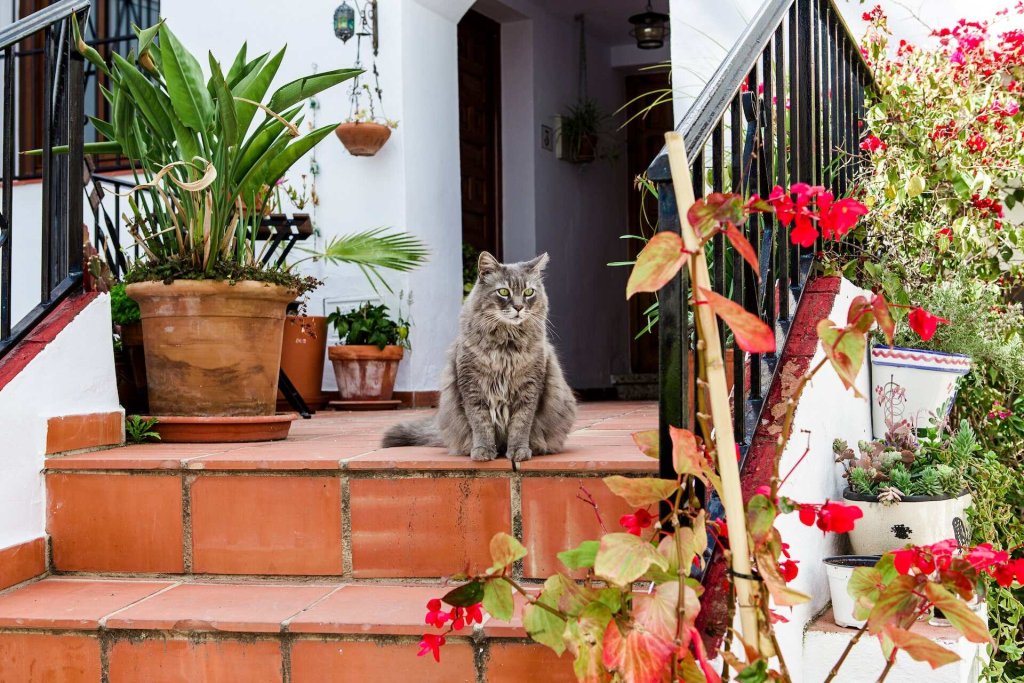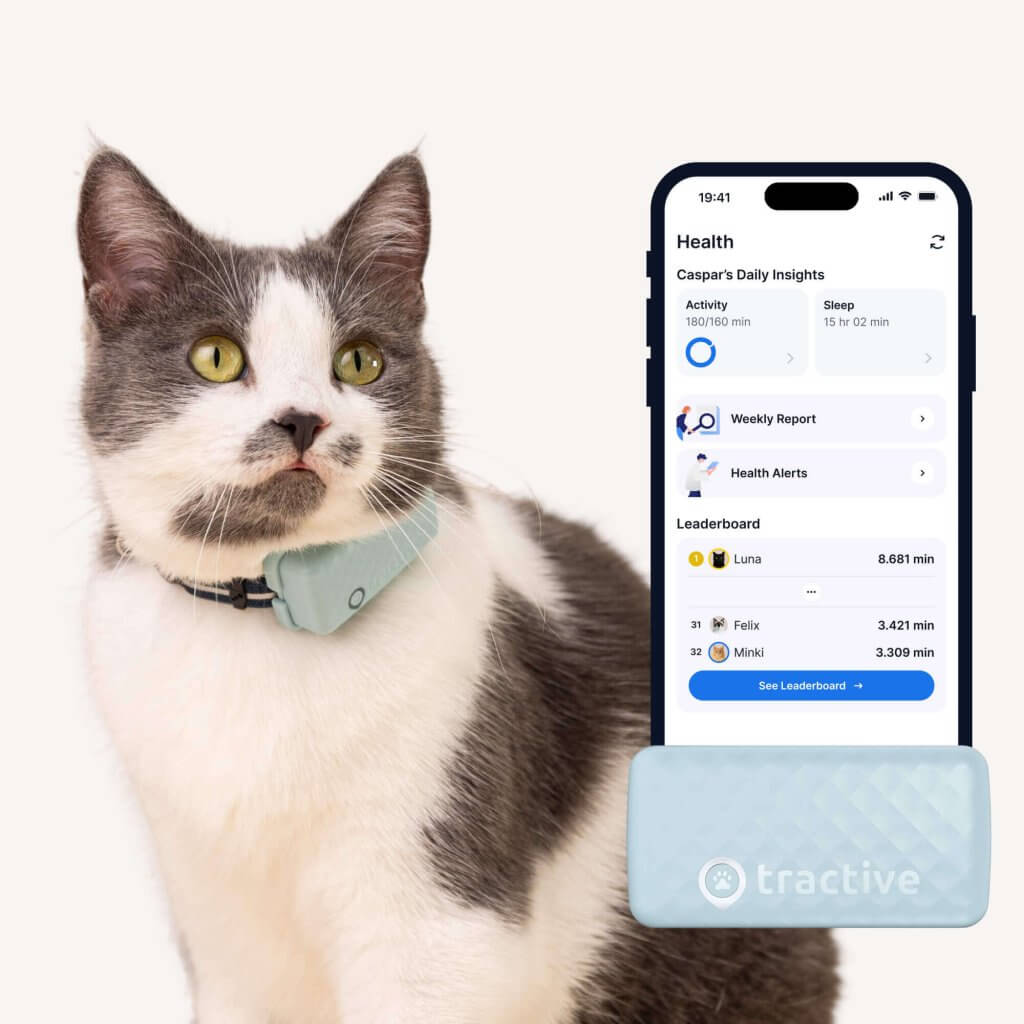6 Easy Indoor Plants That Are Safe For Cats
Indoor plants make for an elegant green space - but are they safe for your cat? Turns out some houseplants might be toxic for them. So here are 6 safe, perfectly cat-friendly options for your home.

Indoor plants add a touch of greenery and elegance to your home…until you realize you’ve just potted one that’s poisonous for your cat. So in this post, we’re going to cover 6 indoor plants that are safe for cats – including some that are both low-light and low-maintenance. Let’s get started with our feline-friendly indoor jungle!

Find out where your cat spends their time.
Read moreWhat indoor plants are safe for cats?
Here are 6 houseplants1 that are both feline-friendly and low-maintenance – perfect for your indoor garden:
- Spider plants (Chlorophytum comosum)
- Boston ferns (Nephrolepis exaltata)
- Areca palms (Dypsis lutescens)
- Calatheas (Calathea spp.)
- Cast-iron-plants (Aspidistra)
- Bromeliads (Bromeliaceae)
Your cat’s a natural hunter and explorer – so they’re definitely going to be tempted to nibble and swat at your houseplants. And since some plants can be toxic to your cats, they might experience a number of health issues if they ingest them by accident. Their symptoms of plant poisoning may range from drooling, vomiting, and diarrhea to seizures, tremors, and even a coma.
But with these feline-friendly indoor plants, you’re all set to stay on top of both your home decor and your cat’s health and wellbeing. Let’s check them out, one by one:
Spider plants
Spider plants are an excellent indoor plant for beginners. Plus, they’re absolute troopers even if you have to shift one to a dark corner, since they don’t need a ton of light to survive. Spider plants are also completely safe for cats, so don’t worry if your feline friend takes a little nibble of those green and white leaves.
Boston ferns
Boston ferns aren’t just a gorgeous touch to your indoor space – they’re also easy to care for. Needing only low to medium light and high humidity, they’re a great choice for a bathroom or a kitchen. The only risk they pose to your cat is if they knock it off your kitchen window by accident. They’re also perfectly safe if they eat a frond (or two.)
Areca palms
Another low-maintenance option that’s safe for cats are Areca palms. They’re a great choice if you want to add a bit of a tropical touch to your indoor space. (Perfect for letting your cat imagine themselves hunting through a jungle.) Areca palms do well in low light areas, but fare equally well in bright, diffused light as well.
Calatheas

Also known as butterfly palms, calatheas are another gorgeous, cat-friendly houseplant. They adapt quite well to medium to low light conditions, but do need a bit more humidity than other indoor plants. So make sure to keep their soil slightly moist.
Cast-iron-plants
These medium-sized plants are perfectly cat-safe and are pretty low-maintenance – being extremely hardy and able to withstand changes in temperature, dust, and smoke pretty well. They’re a great option if you’re a busy cat parent and don’t have a ton of time at hand, but would like a green touch to your indoor space anyway.
Bromeliads
Needing only bright light and a moist environment, bromeliads are also safe for cats despite their large, colorful leaves. Most bromeliads can grow free of soil, so you can attach them to a log or keep them hanging – well out of reach of your feline friends.
Besides these, here are a couple of other ASPCA-approved feline-friendly houseplants:
- Velvet plants (Gynura aurantiaca)
- Christmas cacti (Schlumbergera)
- Marigolds (Calendula officinalis)
- Burro’s tail (Sedum morganianum)
- Staghorn ferns (Platycerium bifurcatum)
- African violets (Streptocarpus sect.)
Why do cats tend to nibble on plants anyway?
It’s not entirely sure why cats tend to nibble on greens like grass or houseplants. And you might’ve wondered if it’s safe for them to be around them in the first place. Some of these reasons your cat might take a bite out of plants or grass in your backyard might include the nutritional and digestive benefits.3 In other cases, they might even enjoy the sensory stimulation.
In any case, we’d always recommend staying on top of your cat’s health and wellness when it comes to decorating your indoor space. Which means you should avoid spraying your plants with harmful chemicals which might be toxic to your cat. If you notice your cat displaying any signs of health issues like vomiting or diarrhea as a result of being near your plants, get in touch with your local vet immediately.
If you’re curious about your cat’s rather unique dietary choices, we cover them in detail on our post on cat grass and why cats tend to nibble on grass from time to time.
How an indoor cat garden can help redirect your cat’s behaviors
Even indoor cats tend to stick to their natural instincts. Which might come out as biting, scratching, chewing, and peeing around the house. Left unattended, your cat might even develop behavioral or health problems without an outlet. But with a garden full of cat-friendly indoor plants, you can help redirect some of these behaviors.4
For example, if your cat tends to chew your slippers or investigate all kinds of spaces, your houseplants can offer a safe distraction. They can safely chew on non-toxic plants like oat grass or even catnip without any tummy troubles. You could even rub these “safe” plants with some of your cat’s regular food to encourage them to sniff around and stay engaged.
Safe indoor plants also create an enriched environment for your cat. Under a leafy green cover, your feline friend can more easily imagine themselves hunting in a jungle or stalking prey. If you have multiple cats at home, an indoor garden is a safe space where they can play, play fight, and pass time together. Plus, they’ll benefit from the sensory stimulation of being around nature.
Another way indoor plants benefit your cat is by giving them a cool-off zone. Cats need plenty of alone time – so an indoor garden provides them a safe haven where they can rest, relax, and recharge their physical and social batteries. Forcing your cat to socialize or interact with you, your family, or other pets can stress them out over time – and make them more likely to bite, hiss, or scratch in self-defence.
Tips to create a cat-friendly indoor garden
Besides picking the right houseplants, here are a couple of tips that can help you create an indoor garden your cat will love exploring – while staying safe:
- Keep your plants out of your cat’s reach.
Invest in hanging pots or placing your plants high enough out of their reach. While these options are non-toxic, you want to keep both your cat’s tummy and your plants safe. - Invest in cat grass.
Got a snacker in the house? Plant some cat grass they can safely nibble on. Make sure you plant it in a designated spot so that your cat stays distracted and leaves your houseplants alone. - Be smart with your sprays.
Spray your plants with a natural deterrent like citronella or a bitter-smelling apple spray. The scent alone should be able to make your feline friend reconsider taking a bite out of your houseplants. - Keep an eye out for nibbles and damage on your plants.
Your cat might sneakily grab a bite or two – so be mindful of how they interact with your plants. Inspect them for damage every so often so you know what to look out for. - Stay on top of what plants are poisonous for your cat.
Some common houseplants like snake plants, devil’s ivy, and peace lilies can be toxic for your cat. Here’s a comprehensive list of indoor plants and flowers that might cause poisoning if your cat ingests them accidentally.

Get health alerts for your cat
Our cats can’t always tell us if something’s wrong. But if their tracker detects unusual changes in their routine, you’ll get an alert, helping you catch potential issues early.
Build a safe, green indoor space – for you & your cat
Having a cat at home shouldn’t have to mean putting off your indoor green thumb. Start by picking easy, non-toxic, cat-friendly houseplants. Then, you can create a peaceful green indoor space that keeps pets, parents, and plants happy. And with just a few tweaks, like hanging them from pots and actively tracking your cat’s activity levels, you can create a cat-friendly indoor garden that’s both safe and stunning.



